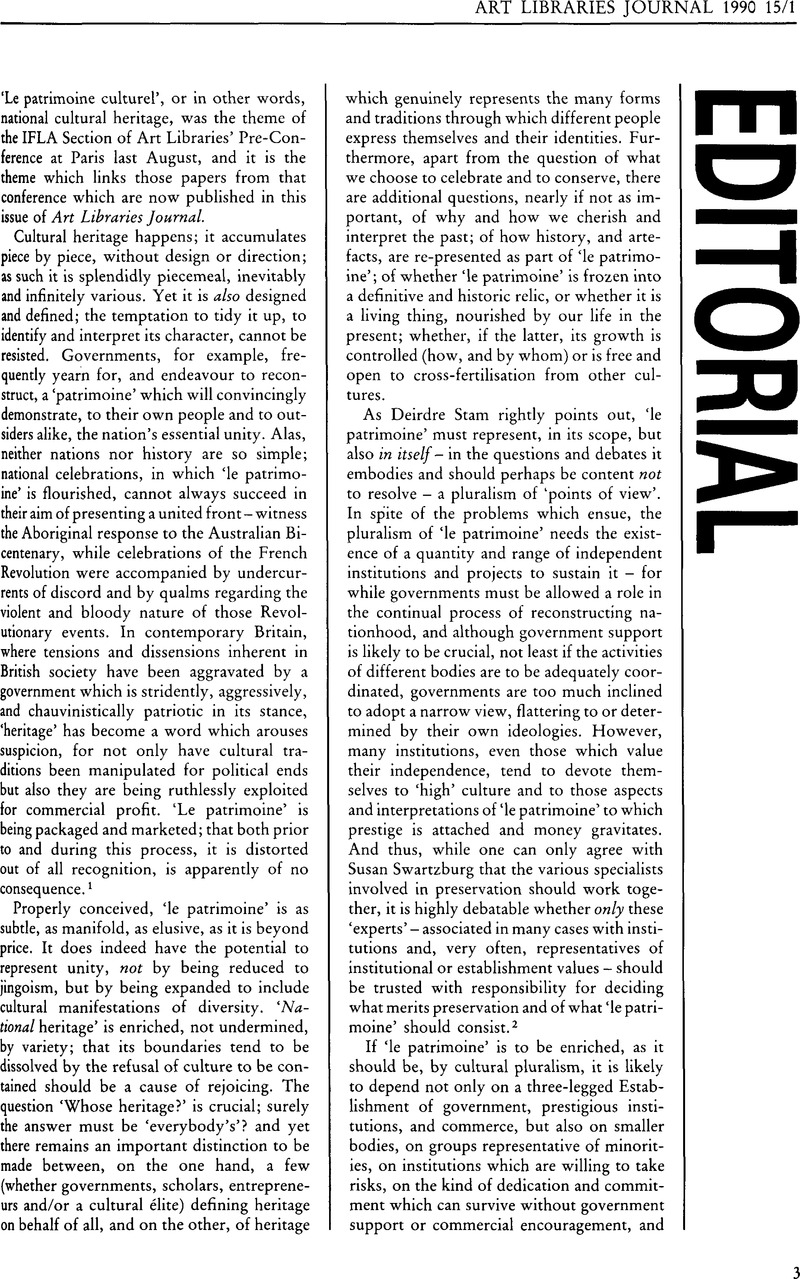No CrossRef data available.
Article contents
Editorial
Published online by Cambridge University Press: 06 June 2016
Abstract

- Type
- Editorial
- Information
- Copyright
- Copyright © The Art Libraries Society 1990
19th August 2024: digital purchasing is currently unavailable on Cambridge Core. Due to recent technical disruption affecting our publishing operation, we are experiencing some delays to publication. We are working hard to restore services as soon as possible and apologise for the inconvenience. For further updates please visit our website: https://www.cambridge.org/universitypress/about-us/news-and-blogs/cambridge-university-press-publishing-update-following-technical-disruption

Published online by Cambridge University Press: 06 June 2016
